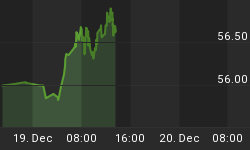Signs of a top are accumulating. Here's survey of the market's happy mood from Wednesday's Financial Times (love the first line):
Irrational equanimity is back. Not only are developed market stocks back to pre-Lehman levels, but investors' comfort levels are in a zone not seen since the eve of the credit crisis in early 2007. Apart from US stock indices, this shows up in the price investors will pay to insure against volatility, with the CBOE Vix index down to its lowest since the crisis eve of July 2007, and in sharp reductions in cash cushions held by institutions.
Merrill Lynch's widely followed survey of fund managers released yesterday, finds that...a majority consider themselves overweight in equities, only 37 percent believe credit default risk to be "above normal" and a net 71 percent believe that corporate earnings will rise 10 per cent or more during the next 12 months. A similar survey of 100 institutional investors by Citigroup found a consensus expectation that the S&P 500 will gain some 11 percent for the year.
Elliott Wave International notes that stocks are rising but volume isn't:
A few years ago, a question was posed to Elliott Wave International's president Robert Prechter:
"Under the Wave Principle, what is the most important thing to watch other than price?"
Prechter answered via his monthly Elliott Wave Theorist: "Volume."
High trading volume is a chief characteristic of a healthy trend, bullish or bearish. The DJIA has rallied for over a year now off its March 2009 low, but volume has consistently been lacking. We've shared our thoughts on this fact many times with our subscribers.
"Many market watchers said that the low volume in December was merely seasonal and not bearish. But volume in January has been no higher than it was from December 1 to December 22, and it is still lower than October's, which was lower than September's, and so on." - Bob Prechter, Elliott Wave Theorist, January 2010.
Even lately, low volume has persisted. Here's what is notable, though: The market's down days have generally been on higher volume than the up days. This could mean investors are gradually leaving the market.
For more in-depth look at volume, see Low Stock Market Volume: It's Even Weaker Than You Think
And here's a video from technical shop INO showing that US stocks have completed a 61.8% Fibonacci retracement, "a very very key level."















